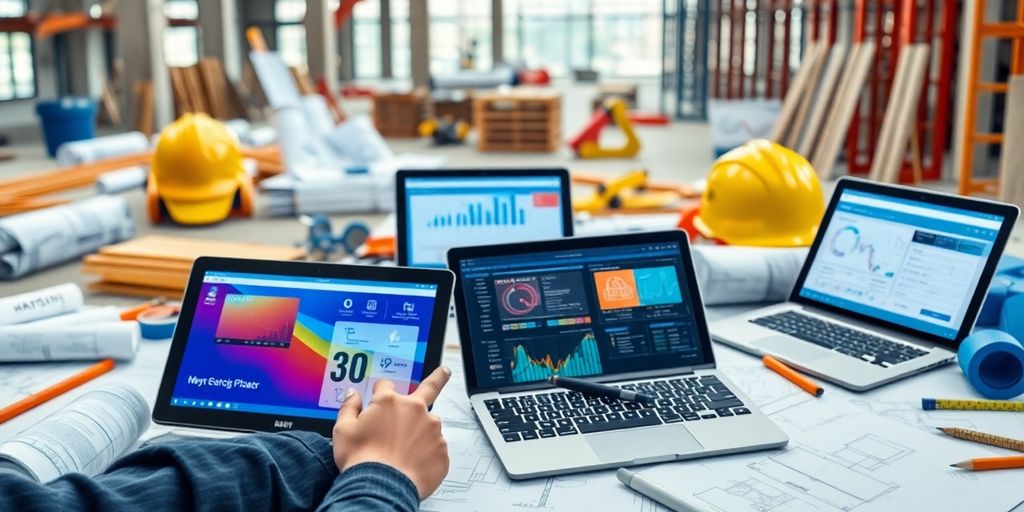Recent technological innovations have brought improvements to construction projects that increase quality while reducing costs. In order to maintain a competitive advantage in this highly competitive space, you need to be paying attention to new developments in the construction world.
What that worked well just a few years ago might not be commercially viable anymore. Here are 7 innovations that you need to keep track of so that you can save time and money.
1. 3D Printing
 House built with 3D printers in China
House built with 3D printers in China
The use of 3D printing in Civil Construction is widespread in China and the US. The technology helps to reduce material waste on jobsites, improve worker security and reduce construction time. This can end up reducing construction costs by 90%.
A startup created by students at the University of Brasilia called InovaHouse 3D is betting heavily on 3D printing in the construction industry. These guys have figured out how to make 50 m² houses for less than $10,000.
Another Brazilian company called Urban 3D, is betting on sustainable materials. The first product developed by them is a new type of concrete made from recyclable materials, which maintains structural properties and is 30% cheaper. In China, where the technology is a lot further along, there is a company that boasts the ability to build 10 houses in 24 hours using 3D printing.
2. Wearable Sensors
 Virginia Tech Invention Monitors Possible Carbon Monoxide Poisoning
Virginia Tech Invention Monitors Possible Carbon Monoxide Poisoning
Though new to the scene, wearable technology is already bringing innovations to civil construction. In the US, companies put smart sensors on workers’ uniforms to improve safety. Sensors applied to helmets can warn if there was an impact. Wristwatches monitor body temperature and help avoid thermal exhaustion. Harnesses help to keep track of who is in a building and if there is a sudden drop in the number of people.
3. Self-leveling Flooring
Self-leveling flooring, also known as self-leveling concrete is a relatively new innovation. It is more viscous and easier to use than other types of mortars. It’s 50% faster to use than pavement which means less space is needed to store it. In this example, the use of self-leveling flooring increased materials cost by 10.31%, but they were able to put together a 450m² slab in just one day instead of seven, which is how long it normally takes. And, as we know, time is money!
4. Mobile Communication in Projects

Most of the activities at construction companies happen on the jobsite, while many decisions are made in the office. Having clear communication between these two environments is essential to a project’s success. WIthout it, engineers and master-builders can waste a lot of time with emails, phone calls and text messaging conversations in order to identify problems and find a solution.
Mobile Project Communication is a set of practices for project communication between collaborative teams in multiple locations. According to this method, problems need to be tracked and documented in a single system – organized and identified in categories that facilitate the creation of reports and easily searchable historical records. It’s essential as well that information can instantly be shared with field users to eliminate the overwhelming stream emails.
Construct App is the first mobile communication app specifically designed for the construction environment.
5. Sustainable Water Management
 The use of a flow restrictor is part of sustainable management
The use of a flow restrictor is part of sustainable management
The ongoing California water crisis demonstrates the necessity of finding solutions to prevent future shortages. Sustainable water management is essential in structural planning so that everything is built with water conservation in mind.
Installing valves that reduce the pressure of the water in the building, flow restrictors in the taps and rain catch systems are some possibilities. Toilets with two flushing options and urinals without water are also a big help.
The savings can be up to 75% on taps, 80% on toilets and 59% with reused water.
The Sinduscon building in Bahia, Brazil, used sustainable water management when building its new headquarters. Check out their results (in portuguese).
6. Tool Tracking

Very common in shops and supermarkets, barcode readers help you to have absolute control over tools at the construction site. Poor usage can cost companies millions and, moreover, cause accidents if left in inappropriate places.
Each tool receives a barcode, which must be scanned at the beginning and at the end of the day. Thus, a jobsite’s electronic inventory is always kept up-to-date and can be accessed at any time by the administrator.
7. Drones

The use of drones is already common in many sectors and is increasingly found in construction projects. They are mainly being used to monitor construction sites in remote and highly congested areas.
With the use of drones, is it possible to do 3D mapping and site evaluations in real-time. Recorded videos can be automatically converted into reports for administrators. Possible risks and delays are monitored at all times.


